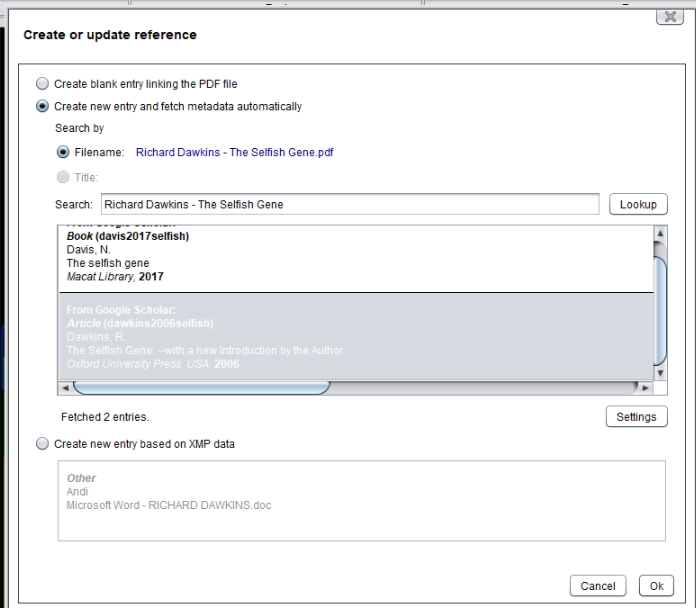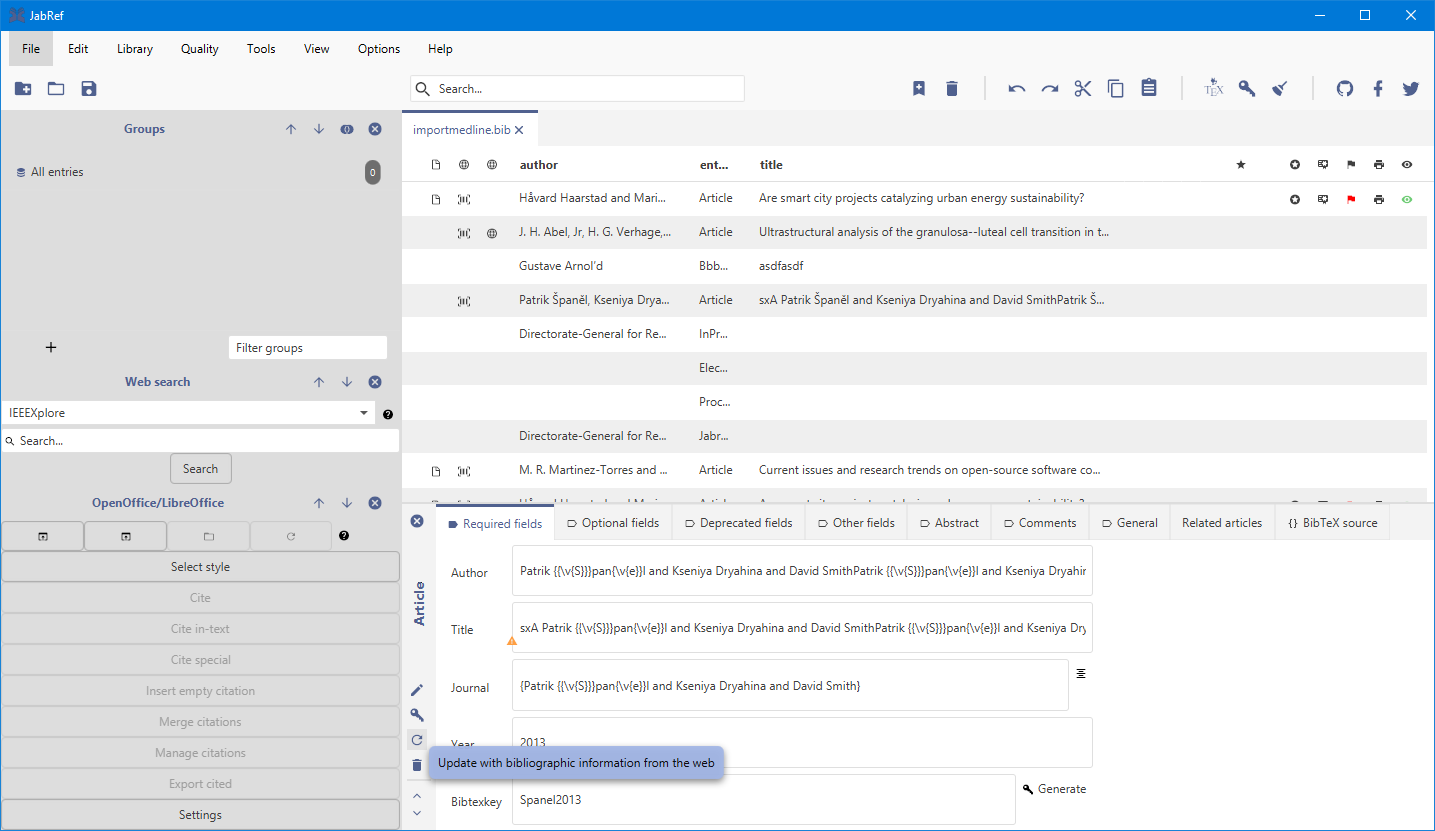


Update 2: As I just posted today, you can also search Google Scholar from within JabRef (Hit F5 or click Search on the menu bar and then Web Search, and then select Google Scholar from the dropdown menu), or if you prefer searching from within your web browser, click ‘ Cite‘ for the result you want to add to your database. However as ‘Felix’ points out in the post linked above, you can simply paste BibTeX data into the main library window in JabRef and it will create a new citation from whatever was in your clipboard. One of the problems with JabRef was that it seemed to require a lot of unnecessary copying and pasting and opening up of menus to get the BibTeX data out of Google Scholar and into a new JabRef citation field.
#JABREF IMPORT FROM CLIPBOARD SOFTWARE#
One of the advantages to using bibliography management software is the potential for quickly filling in all of the relevant details about a citation with just a few clicks - it certainly beats manually typing the information every time you need to cite something. It also allows me to download PDFs if I don’t already have a copy. Of course, it’s also possible to use the built-in Google Scholar web search in JabRef, but I prefer using my web browser to get the ‘full’ experience. Now I have JabRef behaving nicely: each time I choose ‘Cite’ and ‘Import to RefMan’ for a Google Scholar result, it appends the data to my open database. However, before toggling the setting mentioned above, JabRef was opening a separate instance for each citation I clicked, and duplicating my database each time. With JabRef running and my desired bibliography database opened, I wanted to directly import results from Google Scholar. You can also launch the task manager (Ctrl+shift+escape) and see that there are two ‘WINWORD.EXE’ processes running. The most obvious reflection of this is that you will have two separate ‘windows’ of Word open on your screen. If you open another Word document, a second instance of Word is launched to display that document. When you open a Word document, it launches an instance of Word. Some explanation if this doesn’t make sense: An “instance” of a program refers to the running process you can think of it as a window. This option allows new instances of JabRef to detect the instance already running, and pass files to that instead of opening a new window.Īnother dilemma I faced with JabRef was that whenever I tried importing directly from Google Scholar, it would open a new instance of the program instead of inserting the data into the instance that was already running. from my web browser, in the running instance of JabRef instead of opening a new instance?Ī: Yes, if you activate the “Remote operation” option under Preferences -> Advanced.


 0 kommentar(er)
0 kommentar(er)
